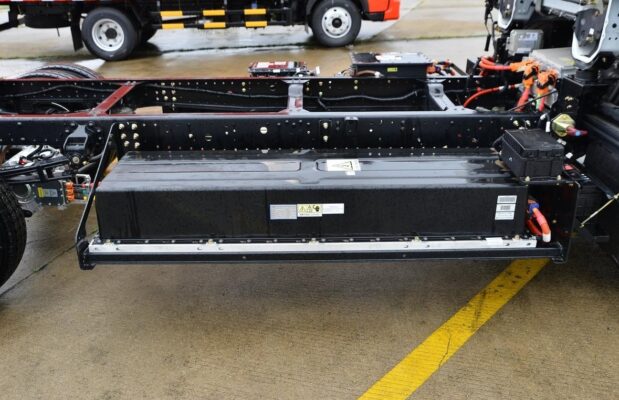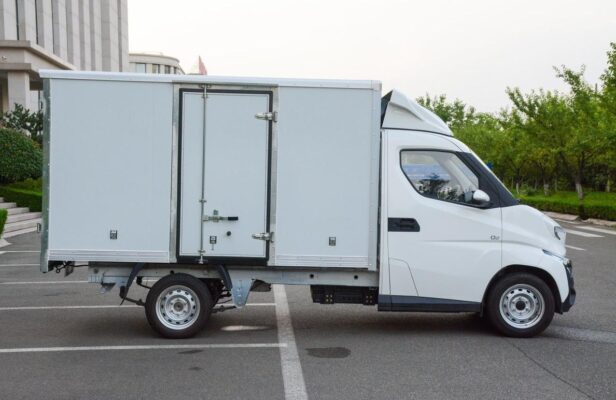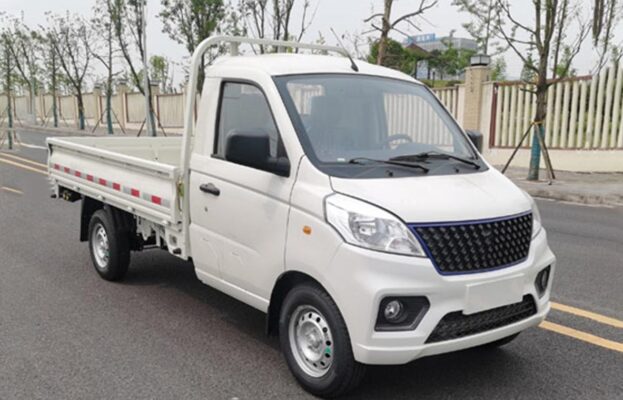Νέα για ηλεκτρικά φορτηγά
Σχετικά με την ικανότητα μεταφοράς φορτίου νέων ενεργειακών ηλεκτρικών οχημάτων εφοδιαστικής
Δημοσιεύτηκε στις με Ηλεκτρικά φορτηγά
Νέα ενέργεια ηλεκτρικό όχημα εφοδιαστικήςs have emerged as a significant player in the field of transportation, offering an alternative to traditional fuel-powered trucks. These vehicles are essentially electric trucks that have replaced the traditional fuel engine with a combination of batteries, motors, and an electric control system. This transition towards electric power is driven by the need for more sustainable and environmentally friendly transportation solutions.

For traditional light-duty diesel trucks, carrying two or three tons of cargo is often not a major issue. Σε ορισμένες περιπτώσεις, trucks with a rated load of 2 tons can even handle four or five tons of cargo without significant problems. This flexibility in cargo-carrying capacity has been a key advantage of diesel trucks for many years.
Τώρα, let’s take a closer look at the cargo-carrying capacity of new energy ηλεκτρικό όχημα εφοδιαστικήςμικρό. Using the Jiefang J6F light truck as an example, we can analyze the data to understand the capabilities of these electric trucks. The diesel version of the J6F light truck has a curb weight of 2.805 tons and a cargo-carrying capacity of 1.495 τόνους. It also has a maximum power of 121 KW and a maximum torque of 560 N.m. Από την άλλη, the electric version of the same truck has a curb weight of 2.995 τόνους, a cargo-carrying capacity of 1.305 τόνους, a maximum power of 120 KW, and a maximum torque of 500 N.m.
As we can see from these figures, whether it’s a diesel truck or an electric truck, there are some similarities in the data. Ωστόσο, there are also notable differences that need to be considered. One of the key differences is the power source. While diesel trucks rely on internal combustion engines, electric trucks are powered by electricity.

This difference in power source has implications for the cargo-carrying capacity. In the case of new energy ηλεκτρικό όχημα εφοδιαστικήςμικρό, under high load conditions, they consume relatively more electricity. This is similar to how diesel trucks consume more fuel when carrying heavy loads. Για παράδειγμα, if an electric truck is carrying 3 tons of cargo, it will have a significant impact on its range.
Γενικά μιλώντας, if an electric truck is operating under normal conditions with its rated cargo-carrying capacity, it may be able to travel a certain distance. Για παράδειγμα, it might be able to travel 200 χιλιόμετρα. Ωστόσο, if the same truck is loaded with 3 tons of cargo, its range may be reduced significantly. In this case, it may only be able to run about 150 χιλιόμετρα.

This reduction in range is a crucial consideration for those using new energy ηλεκτρικό όχημα εφοδιαστικήςμικρό. It means that operators need to be careful about not overloading the vehicle to ensure that they can complete their delivery routes without running out of power. Staying within the normal rated cargo-carrying range is essential to maintain the vehicle’s efficiency and range.
Εξάλλου, when it comes to smaller vehicles like electric vans, the situation is even more delicate. Due to the presence of the battery, these vehicles are two or three hundred kilograms heavier than normal gasoline vehicles. This additional weight already puts some strain on the vehicle’s performance and handling.

If the braking system and shock absorption system of these electric vans are not upgraded, carrying more than one ton of cargo can be relatively dangerous. The increased weight can affect the vehicle’s braking distance and stability. In an emergency situation, a vehicle with an overloaded cargo and an inadequate braking system may not be able to stop in time, posing a serious risk to the driver, passengers, και άλλους χρήστες του δρόμου.
Για παράδειγμα, imagine an electric van that is designed to carry a maximum of one ton of cargo. If the driver decides to load it with two tons of cargo, the vehicle’s brakes may not be able to handle the extra weight effectively. The braking distance may increase significantly, making it difficult to avoid collisions. Επιπλέον, the shock absorption system may be overwhelmed, leading to a bumpy ride and potential damage to the vehicle and its cargo.

To ensure the safety and efficiency of new energy ηλεκτρικό όχημα εφοδιαστικήςμικρό, it is essential for operators to follow the manufacturer’s guidelines regarding cargo-carrying capacity. This not only helps to maintain the vehicle’s performance and range but also reduces the risk of accidents and breakdowns.
Εν κατακλείδι, while new energy ηλεκτρικό όχημα εφοδιαστικήςs offer many advantages in terms of environmental sustainability and lower operating costs, their cargo-carrying capacity needs to be carefully managed. Operators should be aware of the limitations of these vehicles and ensure that they do not overload them. By staying within the normal rated cargo-carrying range and taking into account the impact of heavy loads on range and vehicle performance, we can make the most of these innovative transportation solutions while ensuring safety on the road.